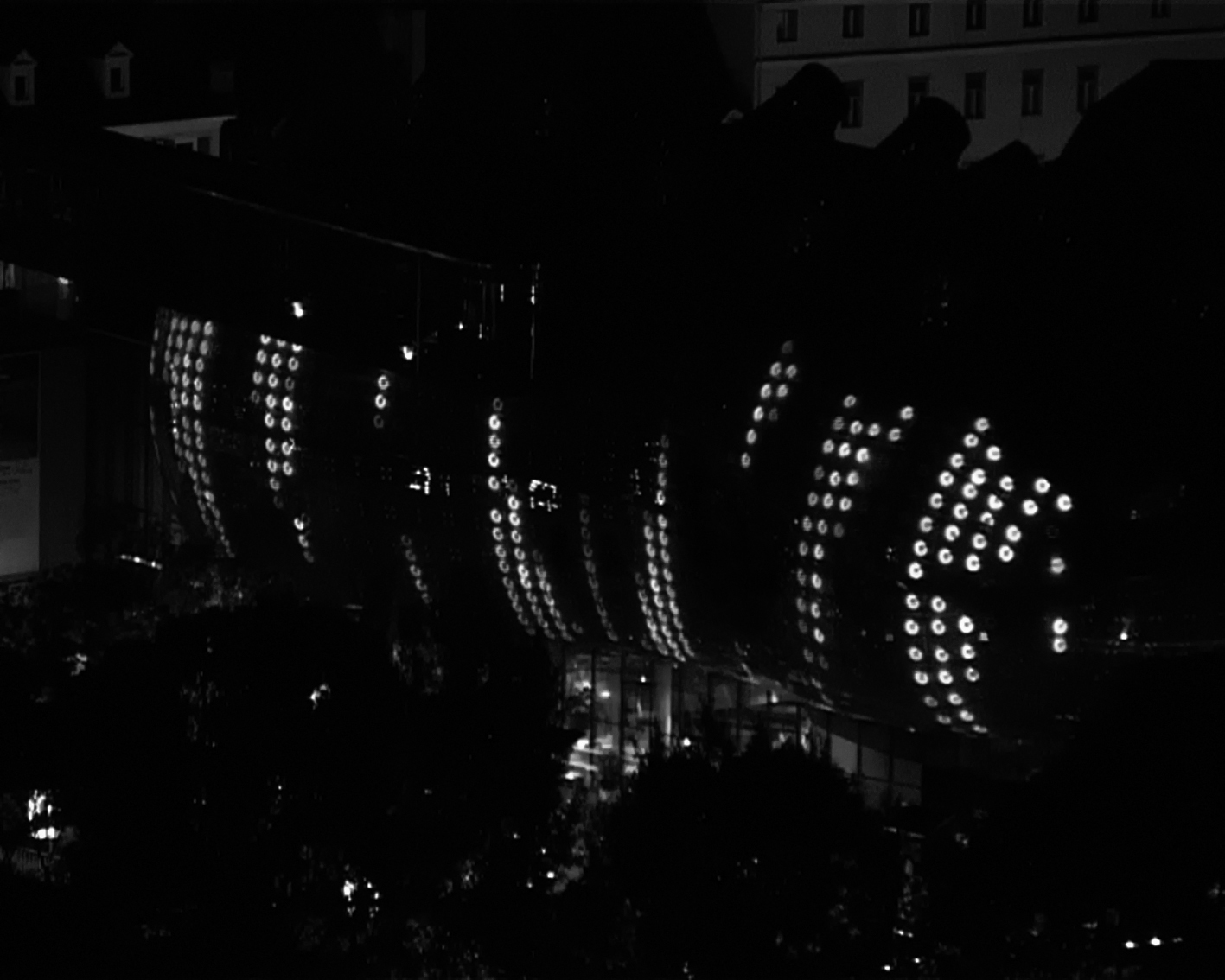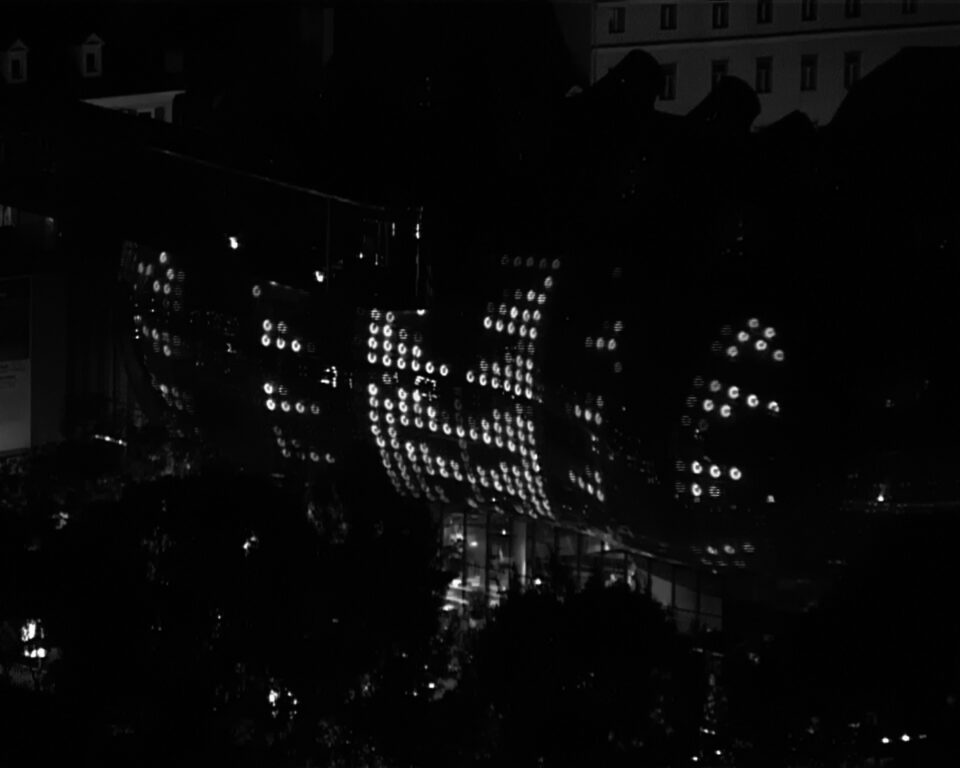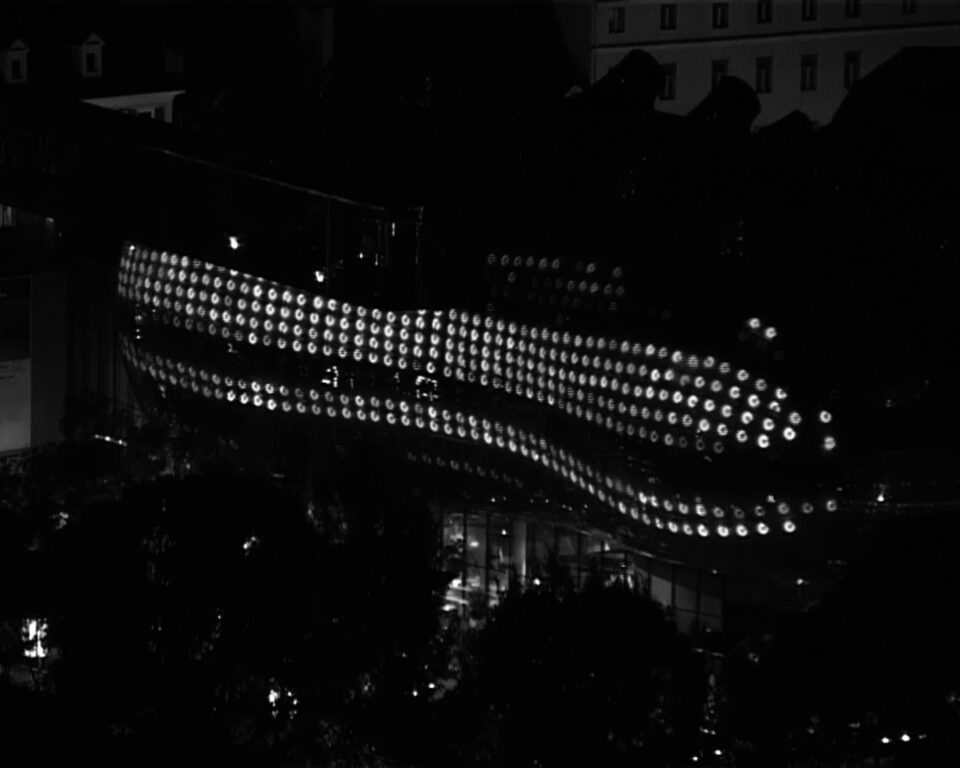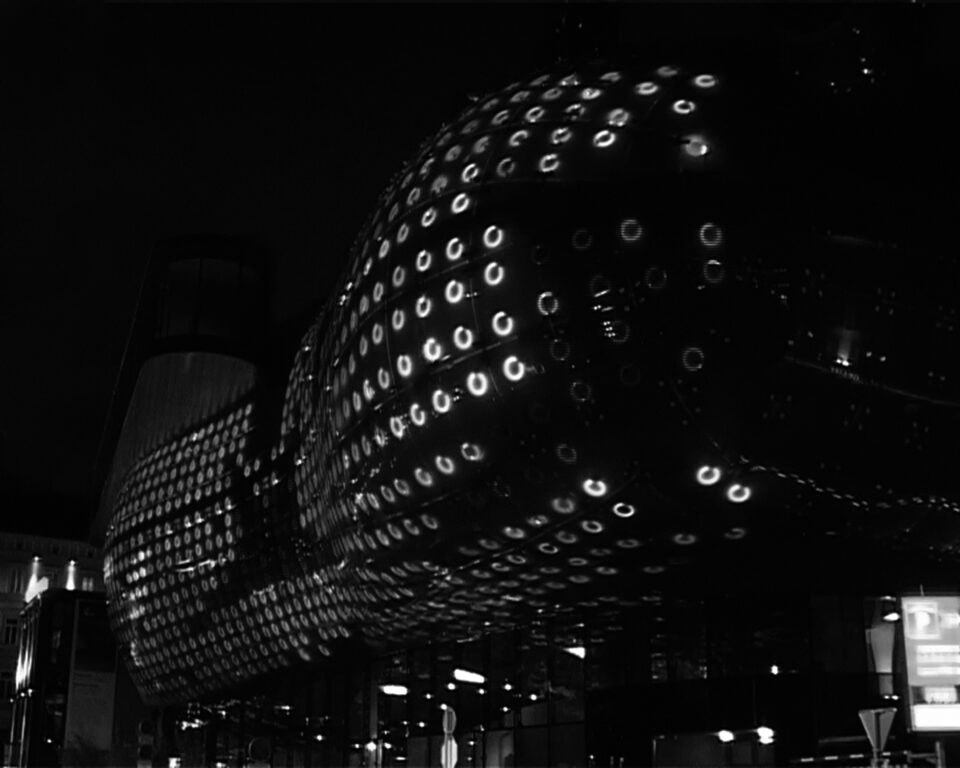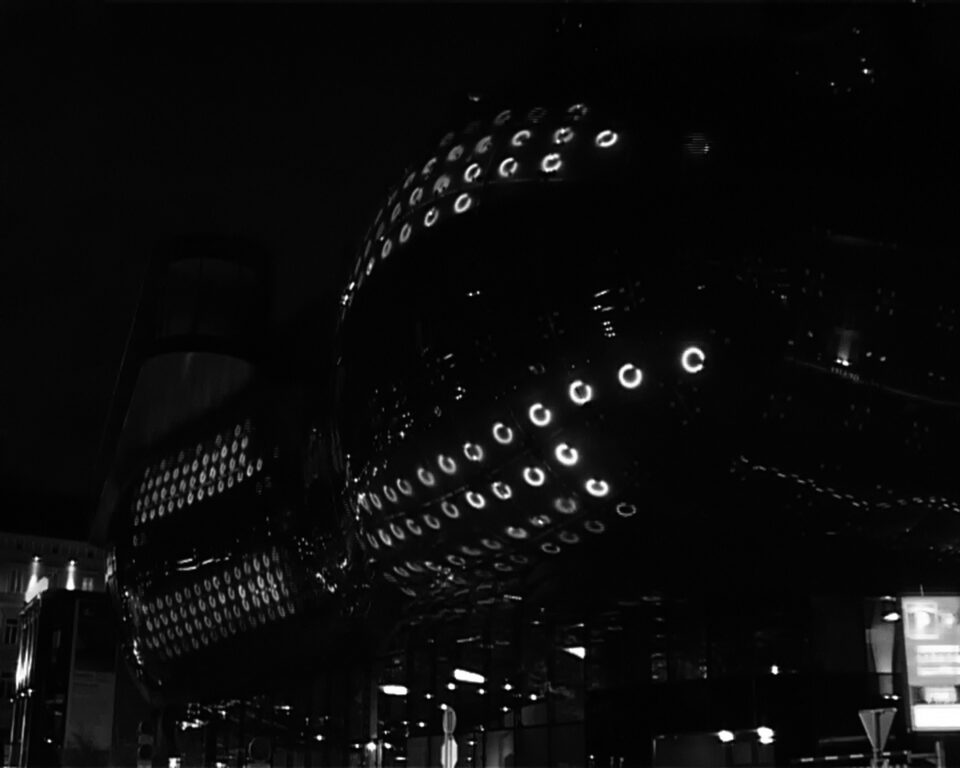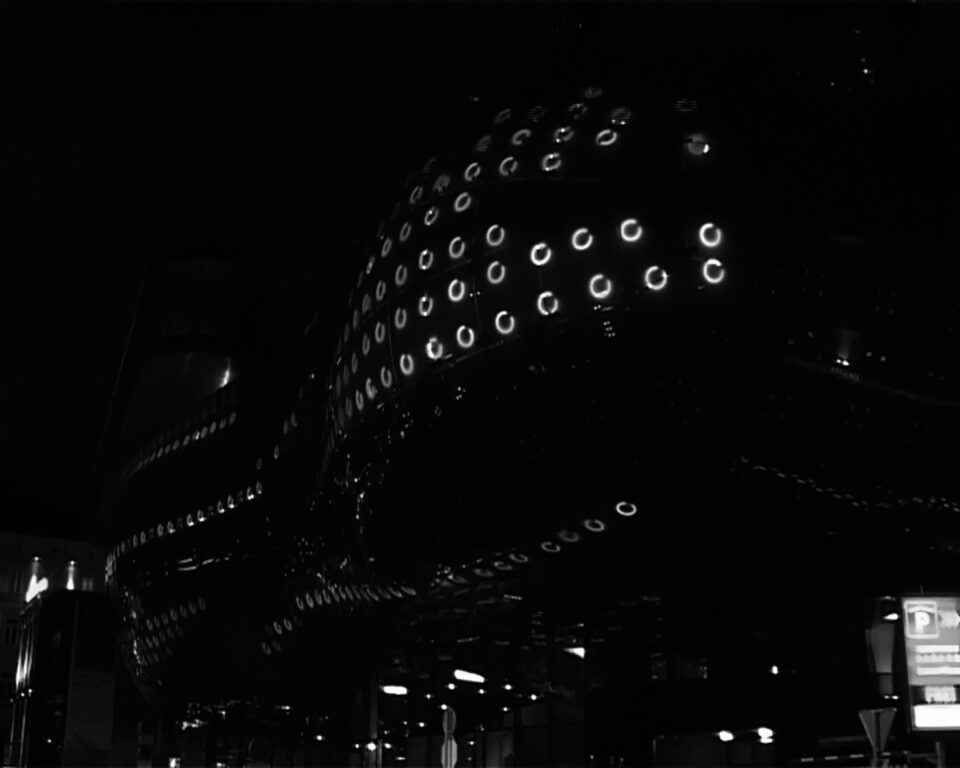Modal Patterns
Vienna-based Colombian artist Andrés Ramírez Gaviria is a conceptual artist who uses digital technology as his laboratory for the analysis of historical “truths”. For the project -./, 2005, Gaviria took Kandinsky’s important essay Point and Line to Plane, 1926, as the starting material for his visual data processing. By translating its basic principle of 20th century painting into the reality of Morse dot and dash and inserting it into a film as diagonal parallel spaces, Gaviria created a way to check Kandinsky’s statement technologically and at the same time set up associations with the Russian’s dynamic color fields. This involves going in the opposite direction as the film narration, which generally makes pictures for the content rather than pictures about the content and leaves the lot to be determined solely via the sequence of pictures. Normal narrative methods are thus turned into paradoxes while film is thereby reduced to its principal parameter of time.
Modal Patterns for the BIX facade is likewise about the abstraction of narration and the analysis of a principle important for abstract art. This involves a project of data visualization and sonification that translates text data into abstract visual animation sequences in a thoroughly ironic questioning undertone. A core axiom of Gestalt theory is taken over and deprived of its meaning by being scrambled into an anagram. The original axiom by Max Wertheimer 1924 is (in its English translation) “(A whole is) more than the sum of its parts”. The ironic commentary in the anagram is “a misshape of truth torments”. The project that translates this sentence into a sample alphabet on the basis of the seven principles of Gestalt psychology makes the Kunsthaus Graz a rhythmically pulsating arena of perception phenomena. In this project the building, which seems to reinforce these effects with its amorphous rounding, engages in a visually challenging dialogue with the urban surroundings. Content wise, Modal Patterns interlaces several messages: it emphasizes the meaning of Gestalt theory within the discourse of pattern recognition as transmitted by digital technologies. On the other hand, as a result of the garbling of the theoretical message, it is at the same time also an ironic self-reflective criticism of the idea of using digital technology for verification.
Katrin Bucher Trantow, Katia Schurl
